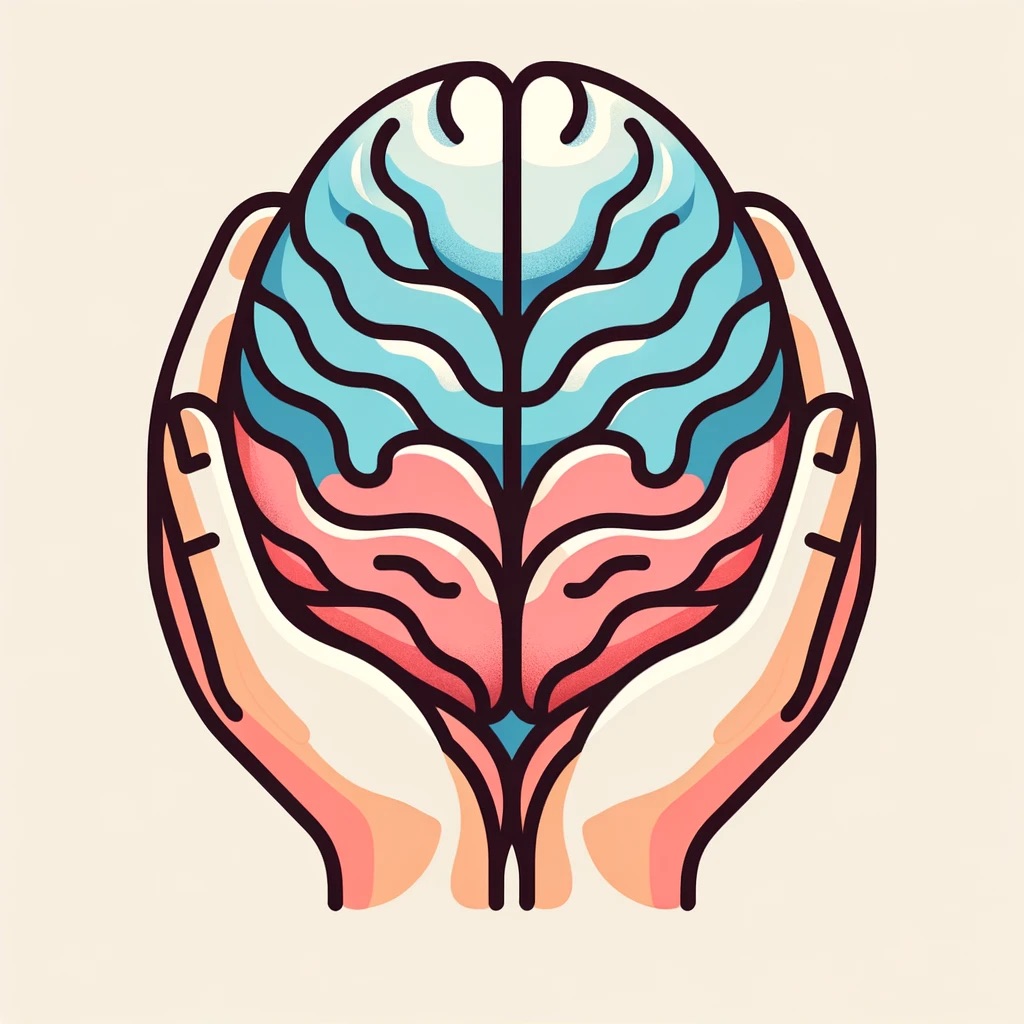By Shannon Bussnick, LSW

Disclosure: Please note that I am not a medical professional. The content provided in this blog is for informational and educational purposes only and is not intended as medical advice or a substitute for professional healthcare advice, diagnosis, or treatment. Always seek the advice of your physician or other qualified health provider with any questions you may have regarding a medical condition or health concerns.
In today’s fast-paced world, “anxiety” has become a catch-all term to describe an array of stress-induced emotions and reactions. From the flutter of nerves before a first date to the dread looming over a pending job interview, or the frustration of being stuck in relentless traffic—invoking ‘anxiety’ has become a common way to express our feelings towards various situations.
Yet, it’s paramount to acknowledge that anxiety’s cloak drapes differently on each of us; our encounters with stress are as unique as our fingerprints. Not all moments of worry signal an underlying anxiety disorder, distinguishing between transient stress and enduring anxiety disorders is crucial for both accurate self-expression and empathy towards others.
Here, we strive to demystify anxiety, aiming to dismantle misconceptions and foster a supportive environment for those navigating through its waves.
Elevating Awareness: The Importance of Mindful Language
The mindful use of language when discussing mental health is not just important—it’s crucial. Casual references to “anxiety” can unwittingly minimize the real struggles of those living with anxiety disorders. As we navigate conversations about mental health, understanding the spectrum of anxiety disorders becomes imperative, highlighting the need for accurate representation and deep-seated empathy.
Communicating Nervousness Without Diminishing Anxiety
It’s often natural to describe feelings of nervousness or stress by using the term “anxiety.” However, to differentiate between everyday stress and clinically significant anxiety disorders, consider using alternative expressions that are more specific to the situation.
Phrases such as “I’m feeling nervous,” “This situation is stressful for me,” or “I’m worried about this particular event” can convey your emotions without conflating them with a possible medical condition.
This distinction helps preserve the gravity of anxiety disorders and ensures that our language reflects the spectrum of mental health experiences accurately.
Encouraging Mindful Language Among Friends and Family
Sometimes, initiating conversations about the importance of mindful language can feel daunting. Here are a few ways to approach friends and family about not misusing the term “anxiety” or mislabeling experiences:
• Share Personal Insights: If comfortable, share why accurately labeling feelings matters to you, especially if you or someone close to you is managing an anxiety disorder. Personal stories can illuminate the impact of words on understanding and empathy.
• Offer Alternatives: Gently suggest alternative phrases that they could use to describe feelings of nervousness or stress. Emphasize that being precise with language can aid in understanding each other better.
• Highlight the Importance of Awareness: Explain how misusing terms like “anxiety” can contribute to the stigmatization of mental health issues and potentially discourage individuals from seeking the help they need. Highlight that accurate language use is a form of support and understanding for those with mental health disorders.
• Provide Resources: Sometimes, sharing articles, books, or videos that explain the significance of mental health awareness and the impact of language can help make your point more effective. Educational resources, for instance, from the Anxiety & Depression Association of America (ADAA), can offer a broader perspective on the issue.
By focusing on how we talk about anxiety and stress, we can create a more inclusive and supportive environment.
Diagnosing Anxiety
As per the American Psychiatric Association (APA), anxiety disorders are not mere episodes of nervousness but are characterized by profound fear or anxiety.
Unlike fleeting discomfort triggered by specific situations, an anxiety disorder often leads to avoidance behaviors, significantly impacting daily life.
A diagnosis is contingent upon whether the anxiety is disproportionately intense relative to the situation and if it disrupts routine functioning.
As recognized by the National Institute of Mental Health (NIMH), there are eleven types of anxiety disorders that can affect how people function in their everyday lives:
• Generalized Anxiety Disorder (GAD)
• Panic Disorder
• Specific Phobia
• Agoraphobia
• Social Anxiety Disorder
• Separation Anxiety Disorder
• Selective Mutism
• Substance/medication-induced anxiety disorder
• Anxiety disorder due to another medical condition
• Other Specified Anxiety Disorder
• Unspecified Anxiety Disorder
It’s essential to keep in mind that there are several other conditions that share symptoms with anxiety disorders but are classified separately in the DSM or related to one’s physical health. These mental health conditions include OCD, which is found in the DSM-5 under Obsessive-Compulsive and Related Disorders, and PTSD, which is found under Trauma- and Stressor-Related Disorders.
In addition, there are many health issues such as heart problems, asthma, diabetes, adrenal dysfunction, sleep apnea, and hyperthyroidism, among others, which can also cause similar symptoms.
Anxiety disorders are the most common mental illnesses in the U.S. and affect over 40 million adults or 19.1% of the population.
-Forbes Health
The Multifaceted Impact of Anxiety
Physically: What Does Anxiety Feel Like?
Anxiety’s physical manifestation can range from subtle tremors to overwhelming sensations akin to panic attacks. Symptoms often include restlessness, an accelerated heartbeat, difficulty breathing, and even digestive issues, reminding us of anxiety’s tangible presence.
Emotionally and Mentally: Navigating the Inner Turmoil
Emotionally, anxiety can evoke a pervasive sense of dread and relentless worry. Mentally, it clouds judgment, disrupts concentration, and may lead to irritability. This internal struggle not only affects peace of mind but also impacts decision-making and emotional resilience.
Socially: The Ripple Effects on Relationships
Socially, anxiety can significantly influence how individuals interact with others. It may manifest as a fear of judgment, leading to social withdrawal and isolation, depriving individuals of potential support networks.
Supporting Someone with Anxiety
Supporting someone with anxiety means being present during both turbulent and calm periods. It involves validating their experiences, offering genuine concern without pressure, and embodying compassion. Simple actions, like changing the scenery and providing practical assistance, can offer immense relief.
Coping with Everyday Stressors
Not all stress indicates an anxiety disorder, but it is crucial to manage daily stressors to maintain good mental health. Practical strategies to cope with stress include practicing mindfulness, engaging in physical activity, prioritizing sleep and nutrition, setting healthy boundaries, and connecting with others.
Risk Factors for Developing Anxiety
Although genetic and environmental factors can contribute to developing an anxiety disorder, there are certain risk factors that increase the likelihood of developing an anxiety-related disorder.
- Shyness, feeling distressed, or being nervous in new situations during childhood
- Exposure to stressful and negative life events or environmental factors.
- A history of anxiety or other mental health disorders in biological family members
Anxiety symptoms can be elicited or aggravated by:
- Certain physical health conditions, such as thyroid problems or heart arrhythmia
- Substances with stimulant properties such as caffeine or the use of certain medications
If you think you may have an anxiety disorder, getting an evaluation from a healthcare provider may help them diagnose your symptoms and find the right treatment for you.
Treatment Modalities for Anxiety Disorders
Although psychotherapy and medication are frequently the primary treatments utilized for anxiety disorders, there are other methods that may also offer advantages. It is crucial to consult with your medical and mental health provider to determine which treatment is the most appropriate for you.

Exposure Therapy
Exposure therapy is particularly effective for specific phobias and social anxiety disorder. It involves gradual, controlled exposure to the feared object or situation under the guidance of a therapist, helping individuals confront their fears and reduce their anxiety over time.
Cognitive-Behavioral Therapy (CBT) and Dialectical Behavior Therapy (DBT)
CBT and DBT are essential treatments that address the thought patterns and behaviors contributing to anxiety, teaching coping skills to manage stress, regulate emotions, and improve relationships.
Talk Therapy and Psychodynamic Therapy
These therapies offer spaces to explore anxiety’s root causes and develop strategies to manage symptoms, with psychodynamic therapy delving into emotional conflicts from past experiences.
Medication and Therapy Combinations
Combining medication with therapy often yields the best outcomes, utilizing antidepressants, anti-anxiety medications, and beta-blockers alongside therapeutic practices to address underlying causes of anxiety.
Meditation and Mindfulness with Holistic Approaches
Incorporating meditation and mindfulness practices can greatly reduce symptoms of anxiety by fostering relaxation and present-moment awareness, complemented by holistic therapies like acupuncture and massage.
Methods of Support
The development of a healthy support network may include family members, friends, healthcare providers, or support groups composed of individuals with similar experiences. This network provides emotional support, encouragement, and understanding, which are crucial for someone navigating the challenges of an anxiety disorder. It can also offer practical assistance, such as help in seeking professional treatment, and a sense of belonging, reducing feelings of isolation and stigma associated with mental health issues.
Utilizing a comprehensive approach to managing and treating anxiety disorders can enhance the ability to cope with stress, encourage a range of positive mental health practices, and foster a supportive community for recovery and well-being.
Conclusion
As we navigate the complexities of anxiety, our comprehensive approach to understanding, supporting, and treating anxiety fosters a more informed and compassionate society. Advocating for accurate representation and mindful language usage validates the experiences of those with anxiety disorders, contributing to a narrative that reflects the true nature of anxiety and offers pathways toward well-being.
References
• American Psychiatric Association. (2021, June). What are Anxiety Disorders? https://www.psychiatry.org/patients-families/anxiety-disorders/what-are-anxiety-disorders/
• Booth, J. (October 2023). Anxiety statistics at a glance. Forbes. https://www.forbes.com/health/mind/anxiety-statistics/
• U.S. Department of Health and Human Services. (2018, July). Anxiety disorders. National Institute of Mental Health. https://www.nimh.nih.gov/health/topics/anxiety-disorders/

Leave a comment